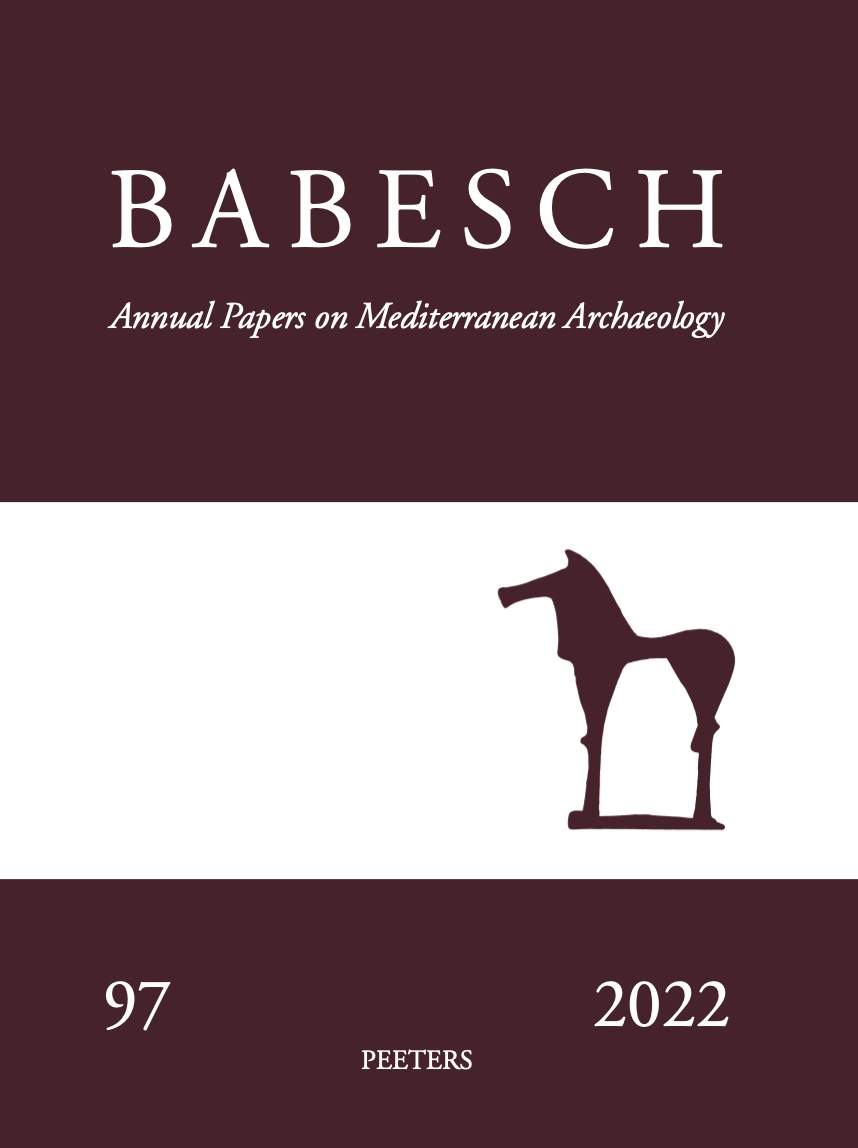 previous article in this issue previous article in this issue | next article in this issue  |

Preview first page |
Document Details : Title: Überlegungen zu Eleusis in geometrischer und früharchaischer Zeit Subtitle: Mit einem Anhang zu eleusinischen 'Stempelidolen' in Tübingen Author(s): RÖNNBERG, Maximilian F. Journal: BABESCH Volume: 95 Date: 2020 Pages: 47-68 DOI: 10.2143/BAB.95.0.3287601 Abstract : While the sanctuary of Demeter in Eleusis has often been interpreted as directly related to the Athenian polis right from its start of renewed activity in the 8th c. BCE or at least from its Early Archaic monumentalisation, more recent research has cast doubts on the political unity of Attica in these periods. Curiously, the role of the local community of Eleusis has rarely been taken into account in studies on the early sanctuary, because the many other finds known from Eleusis have never been systematically compiled. The present article thus first gives an overview of the many rescue excavations beyond the sanctuary, which shows that Eleusis was a large 'dispersed' settlement in the 8th and 7th centuries BCE, in the midst of which the sanctuary emerged. The enormous amount of handmade terracotta figurines ('Stempelidole') known from the site testifies to a sharp increase of the size of the cult community in the 7th and early 6th c. BCE and thus to socio-political developments within the local community before its affiliation to the Athenian state, which written sources date to the first three quarters of the 6th c. BCE. An appendix to the paper presents a group of 74 previously unpublished figurines of this kind from Ferdinand Noack’s excavations in the Eleusinian sanctuary, nowadays custodied in the collection of the Institute of Classical Archaeology of the University of Tübingen. |
|


